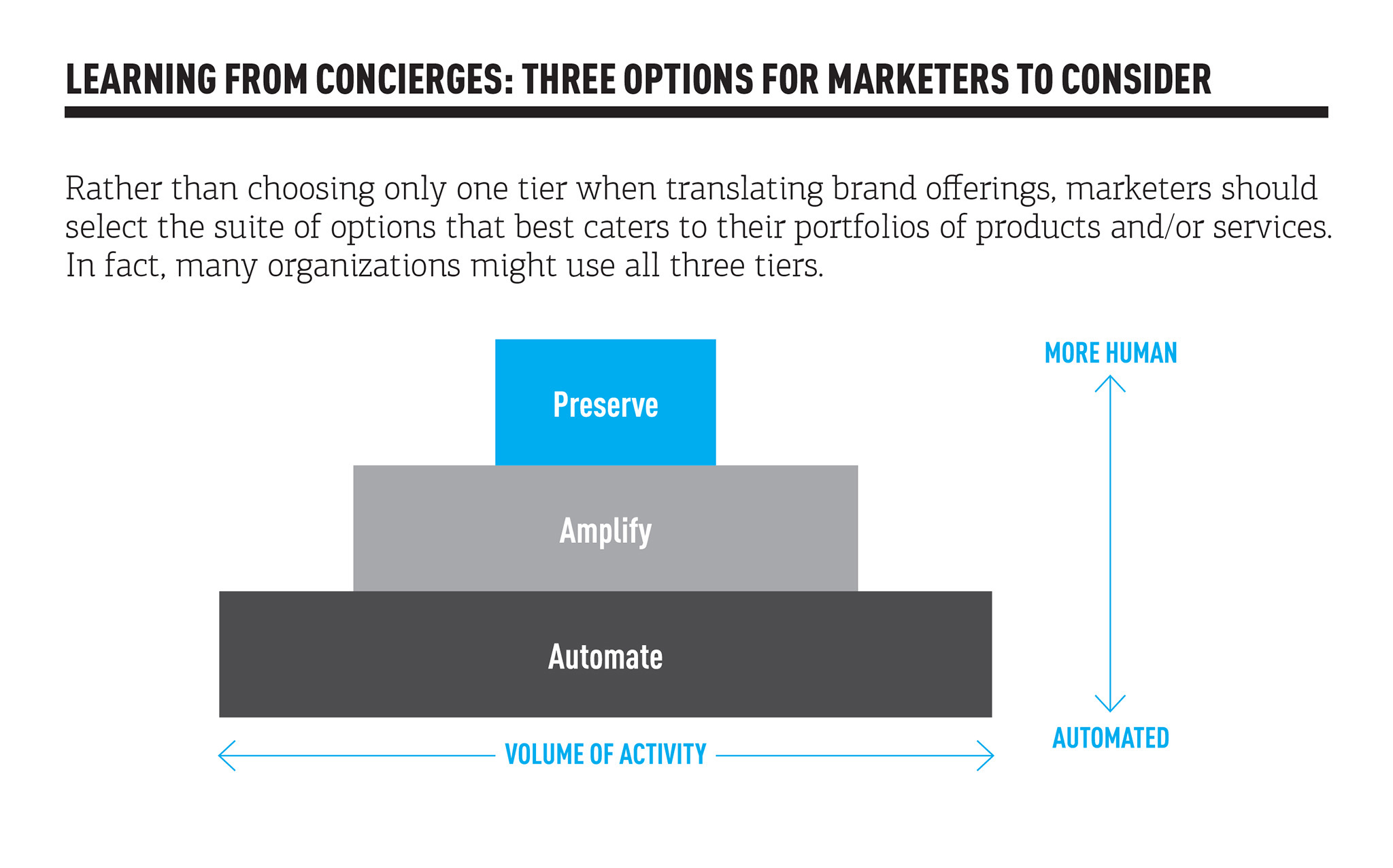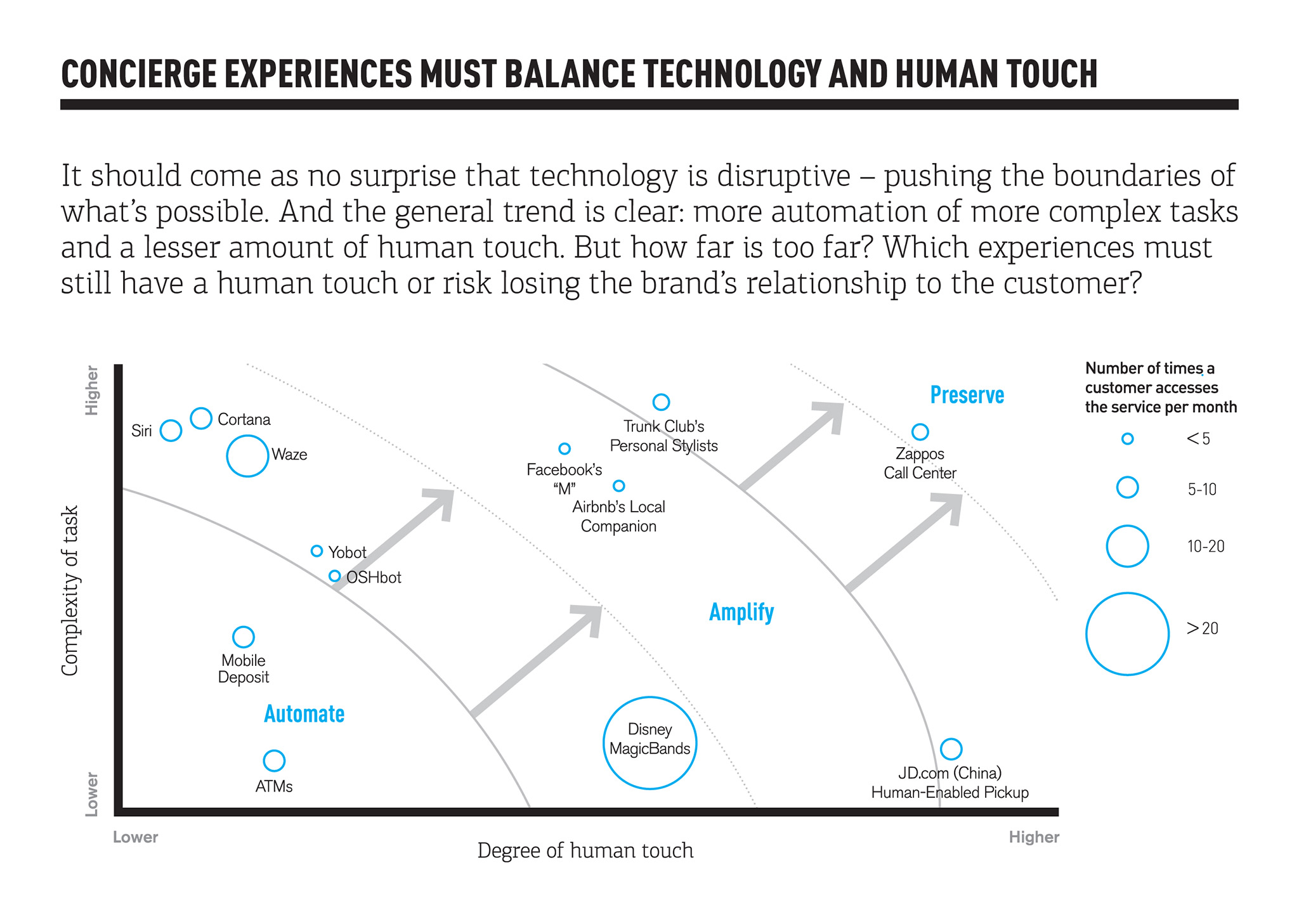One way to answer the above question is to look at an industry that has stood at the forefront of customer service for centuries and is currently at the center of the customer experience battleground: the concierge. As brands attempt to appropriate the language of personalized and bespoke services, they are increasingly rebranding digital service capabilities as “concierge offerings.”
SEE ALSO:How to Gain and Use Brand Insights: Branding Roundtable #18
In digital marketing, leveraging analogies to reimagine products and services is a powerful tool. Analogies link the new and unfamiliar with the common and relatable. Studying the concierge, for example, reveals a range of ways that brands can use technology to amplify, preserve, and automate the human touch. However, while the concierge is a particularly powerful analogy, evoking this concept in digital must be done carefully.
Where are today’s brands going wrong?
In our complex, omnichannel world, brands should be aware of the power and pitfalls associated with casual use of the concierge analogy. The concierge has a reputation for delivering under pressure, solving difficult problems, and becoming a guest’s trusted confidant. In contemporary marketing conditions, brands are making three key mistakes when translating the concierge analogy into a digital equivalent.
1. Playing lip service:Concierge experiences should be crafted
A common mistake brands make when creating digital counterparts for the concierge analogy is playing lip service to the term concierge – simply labeling a feature or service as “concierge” without actually providing a concierge-like experience. By labeling a service as “concierge”, brands set high expectations in terms of quality and personalization.
When brands do not pay off on these promises, they create a disconnect between their services and customers (whose expectations then remain unmet).
2. Misinterpreting:Concierge doesn’t mean exclusive
A second mistake that brands make when translating the concierge analogy into digital is misinterpreting the concept – using the concierge analogy in a way that does not align with the qualities or offerings of a true concierge. One common way that brands misinterpret the concierge analogy is by leveraging the concept to solely indicate status. In an attempt to stratify service offerings, we see brands leveraging the concierge concept as a cheap form of segmentation. This then serves as a barrier of entry for premium services – an indication of status reserved for “gold members.”
3. Over-humanizing:Concierge services should be authentic, not robotic
A third risk brands take when transposing the concierge analogy into digital environments is attempting to mimic the human concierge – to replicate human concierge offerings on a one-to-one basis. Brands assume a big risk by placing (what is hoped to be) a human face on digital experiences.
Creating such branded, digital experiences that mimic human connections increases expectations around the experience – along with frustrations if those experiences fail to deliver human experiences.
How to get it right
To aid marketers in successfully translating the concierge analogy (or any human service analogy) and navigating through this world of digital complexities, we developed a three-tiered model to explore the interplay between the digital and human. Automate tends to make more sense with high-volume, routine activities (think ATMs), while Preserve is particularly powerful with lower volume, highly-customized interactions (think clothing recommendations).
RELATED:Made for Me — 3 Ways Brands Can Achieve Successful Personalization
Amplify is, in some ways, the most interesting of the three. The ability to use digital tools in real time to amplify the human touch has been made possible by the dropping prices of technology and increased computing power.
After identifying an appropriate analogy as your source of inspiration, this model aids in developing tactics to authentically translate and implement that analogy in digital.
1. Automate: Digital
When translating a service analogy, there are many service offerings that digital can actually do better than a human. These offerings should be replicated or automated with digital. For the concierge, these offerings are mostly simple tasks, including delivering amenities, finding products, scheduling, giving directions, placing orders, and providing discounts.
Automation is a key tool in businesses designing the customer experience of the future. But leaders must be careful not to automate the humanity out of an experience entirely.
2. Amplify: Digital + Human Touch
One of the most effective ways to deliver a true concierge-like service is by amplifying humanity with digital technology. Certain service offerings cannot be purely replicated with digital, but can be further amplified when the human touch is combined with digital. For the experience creator, these offerings include the ability to filter information, collaborate with consumers, leverage networks of contacts, and make relevant recommendations.
3. Preserve: Human Touch
Finally, there are some service offerings that have a tendency to fall flat when translated into digital and should be preserved for humans. In the case of the concierge, these are sacred traits that have been passed down and ingrained for centuries – things such as empathy, friendship, loyalty, and discretion.
When technology is strategically used to both replicate and amplify mundane, everyday, repeatable service functions, the human concierge can then dedicate more time and energy to those services that are inherently sacred to his or her craft – services that technology cannot genuinely follow through on (at least not yet). Technology, rather than render human skills obsolete, highlights which human traits are most valued.
Leveraging the power of analogies
So what does all of this mean? Simply put, it means that as a digital marketer, protecting the digital expression of your brand is now a part of your job description. There is an inherent tension between humanity and technology at almost every touchpoint between you and your customers. You have to balance the realities of ROI, costs, and business goals.
SEE ALSO:The Role of the B2B CMO in Innovation
But this is also an incredible opportunity.
The opportunity lies in becoming incredibly aware of all of the digital touchpoints throughout your brand’s customer journeys, experience models, and personas. Then, layer onto these models the lenses of Automate, Amplify, and/or Preserve.
Great strategy comes from situational awareness. By visualizing your experiences as much as possible through the eyes of your consumers, you can uncover the trade-offs in the interactions – however small – that might take too much humanity out of an experience. Along every touchpoint, you should question, “Why are we doing it this way?”
To read more about this model (along with exemplary cases for each tier) and the future of experience automation, download the full article PDF.
By Rob Murray, Director of Consumer Intelligence, and Derek Kopen, Senior Associate, Marketing Strategy and Analysis, for SapientNitro in New York.




